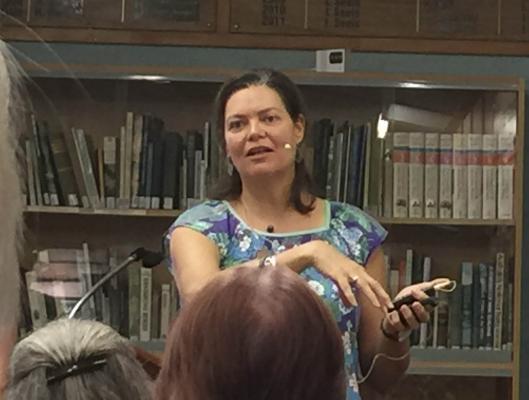Jacarandas are blooming earlier, magpies are breeding earlier and Asian geckos are migrating southward.
These are just a few of the ways already recorded that show how plants and animals in Australia are responding to climate change.
Under an ambitious ClimateWatch program an army of citizen scientists is being enlisted to record climate changes Australia wide.
Locally Sunshine Coast Council environmental education officer and University of the Sunshine Coast researcher Dr Lisa Ryan is managing the program.
In a recent talk at Noosa Parks Association Dr Ryan told guests about the program that focuses its observations on about 180 indicator species.
Dr Ryan said the program aimed to understand phenology – the seasonal behaviour of Australia’s plants and animals and how this is affected by changes in temperature and rainfall.
“Shifts in phenology are simple indicators for climate change responses in the natural world,” she said.
“As one of the first continent-wide phenology projects, ClimateWatch is an ambitious program that enables every Australian to be involved in collecting and recording data that will help shape the country’s scientific response to climate change.”
Dr Ryan’s experience in the local area is extensive. At Sunshine Coast Council she coordinates Environmental Education Programs across council’s three Environmental Education Centres including the award-winning Mary Cairncross Scenic Reserve and school-based Kids in Action Program. She recently assisted the Maroochy Wetlands Sanctuary Support Group establish a ClimateWatch Trail, with funding from the Australian Government’s Community Environment Program.
Through the use of a Smartphone App program citizen scientists record their observations accompanied by photographs that include GPS data.
Since the program began in 2009 there have been more than 110,000 observations recorded and hundreds of papers published using the data, Dr Ryan said.
All observations are checked by scientists before being included in the program.
“Science has to be done in rigorous ways. You have to capture observations in a rigorous way but it can also be a recreational activity,” Dr Ryan said.
Three ClimateWatch trails have been set up at Maroochy wetlands, Kawana forest and Currimundi Lake where recordings of multiple observations of the area’s 47 identified indicator species by citizen scientists build up a phenology picture.
Indicator species are selected because they are common to the area, easy to identify, safe to observe and have strong phenophase behaviour.
Dr Ryan said participants can do ClimateWatch anywhere and groups could establish their own trails.
To be involved people can download the ClimateWatch Spotter On App.
A training session on the use of the ClimateWatch app will be conducted through the Sunshine Coast Council Environmental Education Centre on 13 May at 10.30am.







